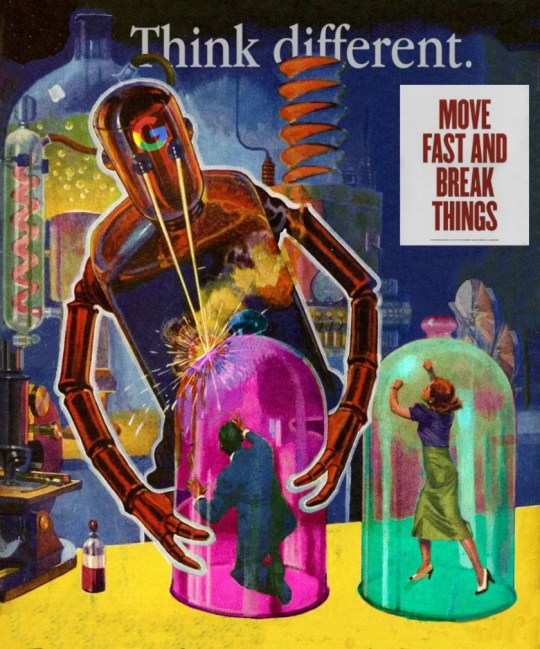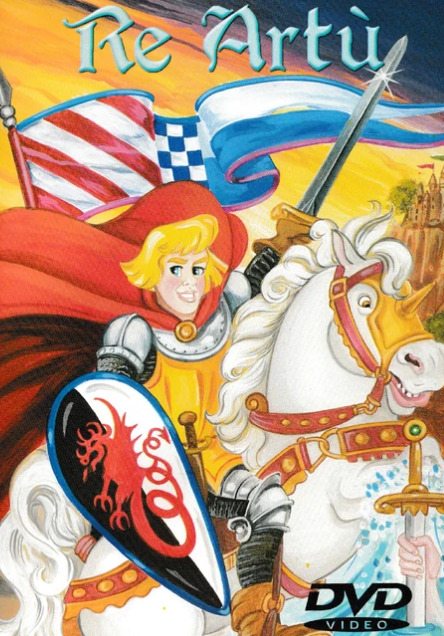#amazon code ai
Explore tagged Tumblr posts
Text
Unlocking Amazon Codes' Complete Potential: A Step-by-Step Guide

Overview
A vital component of the Amazon ecosystem, Amazon coupons can be used for anything from applying discounts to activating devices. Knowing how to use these codes can make a big difference in your experience, whether you're utilizing Amazon CodeArtifact for development purposes, configuring an Apple Watch, or setting up an Alexa device. This tutorial will provide you a thorough, user-friendly, and interactive rundown of using different Amazon codes.
First Chapter: CodeArtifact on Amazon
What is CodeArtifact on Amazon?
Software packages used in development may be easily stored, published, and shared securely by organizations with the help of Amazon CodeArtifact, a amazon code alexa login fully managed artifact repository service. It integrates easily with your current CI/CD pipelines and supports package managers and formats such as NuGet, Python, npm, and Maven.
Using CodeArtifact from Amazon
Setup and Configuration:
Register: Visit aws.amazon.com to create an account if you do not already have one for AWS.
Establish a repository: Go to CodeArtifact in the AWS Management Console and start a new repository.
Set up Authentication: To enable access to CodeArtifact, build a policy using AWS IAM.
Packages for Publishing:
Configure Package Manager: Set up your CodeArtifact repository's connection to your package manager (such as npm or Maven).
Publish: To upload your packages to CodeArtifact, use the publish command in the package manager.
Getting Packages Back:
Install Packages: Assembly CodeArtifact as the package source for your project, then install the necessary packages.
Chapter 2: Alexa Codes from Amazon
Code for Amazon Enter Code for Alexa
An activation code is amazon code artifact frequently needed while setting up an Amazon Alexa device in order to connect it to your Amazon account.
Utilizing Amazon Codes to Turn on Alexa
Configure the Alexa Device:
After plugging in your Alexa device, complete the Alexa app's setup instructions.
A code will show up on your device's screen during setup.
Put the Code in:
Launch the Alexa app on your smartphone.
Go to settings and type in the code that amazon code alexa enter code appears on your Alexa device.
By doing this, you can use all of Alexa's features by connecting your device to your Amazon account.
Chapter 3: Using Coupons from Amazon
Use Your Amazon Code
You can access exclusive features, promotions, and discounts by using Amazon codes. This is how these codes work well when applied.
How to Use Amazon Coupons
Find the Code: Look for the coupon or discount code during the checkout process, on product pages, or in Amazon's promotional emails.
Put Products in the Cart: Put the things you want to buy in your shopping cart.
At checkout, enter the code:
Go ahead and check out.
Find the "Gift Cards & Promotional Codes" box on the "Review your order" page.
After entering the code, select "Apply."
Your order total will reflect the discount or offer.
Typical Use Cases:
Product discounts: Get money off of particular brands or categories.
Free Delivery: Take advantage of free shipping on qualifying orders.
Offers That Are Only Available Through Code Application: Take advantage of exclusive discounts and promotions.
Chapter 4: Setting Up Amazon Electronics
Activate the Amazon Code
When setting up an Amazon gadget, like a Fire TV, Echo, or Kindle, you will usually be prompted to enter a code.
How to Activate a Device
Configuration Device:
Turn on your gadget by plugging it in.
Until a code appears, follow the on-screen setup instructions.
Put in the code:
On your PC or mobile device, go to the given URL (often https://amzoncode.com/).
If prompted, sign into your Amazon account.
To finish the activation process, enter the code that appears on your smartphone.
For instance:
Fire TV: A code will show up on your TV screen after you connect to Wi-Fi. To connect your Fire TV to your Amazon account, enter this code at www.amazon.com/code.
Chapter 5: Apple Watch Code on Amazon
Apple Watch with Amazon Services Integration
You may increase your convenience by using Amazon services on your Apple Watch, which lets you use Amazon features right from your wrist.
Configuring Apple Watch with Amazon
Install the app:
To pair your Apple Watch and iPhone, install the Amazon app on your iPhone.
Sign in:
Using your Amazon login credentials, launch the app on your iPhone.
Linking up with an Apple Watch:
On your iPhone, launch the Apple Watch app.
From the list of amazon code apply available apps, locate the Amazon app and turn it on.
Put the activation code in here:
If your iPhone asks for an activation code, enter it as directed.
This enables easy use of Amazon services by connecting your Apple Watch and Amazon account.
Using Apple Watch with Amazon:
Shopping: Use your Apple Watch to browse and buy products straight from the device.
Get notifications on the status of your orders and about special offers.
Voice Commands: To use Amazon services, such as adding goods to your cart or monitoring delivery statuses, use Siri.
In summary
Using Amazon coupons is a great way to take advantage of all of the company's services and goods. The ability to use discount codes wisely can improve your experience, whether you're a developer utilizing Amazon CodeArtifact, an Alexa user configurin
g your smart home, or a consumer trying to save money on purchases. To get the most out of your Amazon experience, adhere to the instructions provided in this article.
Cheers to using Amazon for development, streaming, and purchasing!
#amazon code apply#amazon code alexa login#amazon code alexa#amazon code for free delivery#amazon code ai
0 notes
Text
Exploring Quantum Leap Sort: A Conceptual Dive into Probabilistic Sorting Created Using AI
In the vast realm of sorting algorithms, where QuickSort, MergeSort, and HeapSort reign supreme, introducing a completely new approach is no small feat. Today, we’ll delve into a purely theoretical concept—Quantum Leap Sort—an imaginative algorithm created using AI that draws inspiration from quantum mechanics and probabilistic computing. While not practical for real-world use, this novel…
#AI#algorithm#amazon#chatgpt#coding#computer science#css#data-structures#DSA#engineering#google#heapsort#insertionsort#javascript#mergesort#new#programming#python#quicksort#radixsort#sorting#tech#tesla#trending#wipro
2 notes
·
View notes
Text
instagram
This tool skyrockets my productivity! 🚀 My Favourite Productivity App for 2025 Is Wondershare PDF element ✨ Wondershare PDF Element is the one-stop PDF solution powered by AI. It is a fast, affordable, and easy way to edit, convert, sign PDFs, and more - accessible across desktop, mobile, and web platforms. Boost your studying efficiency with AI.
#convert#mobile#and web platforms.#technology#AI#machinelearning#software#app#website#short#bloggerstyle#jobhelp#resumetips#linkedintips#BigTech#phdstudent#bachelor#mastersdegree#instadaily#inspiration#instagramers#Amazon#coding#programming#PDF#pdfediting#pdfelement#wondershare#ProductOfTheDay#StudySmart
1 note
·
View note
Text

This blog will explore the RAG framework and its benefits. Let's know the key role of AWS and AI services including Amazon Bedrock and Amazon ElastiCache Redis.
#aws services#crmsoftware#ethics first#habilelabs#ai engineer#aiplatform#ai coding#aidevelopment#amazon
0 notes
Text
Use no-code machine learning to derive insights from product reviews using Amazon SageMaker Canvas sentiment analysis and text analysis models
Exciting news! 🎉 Want to use machine learning to gain insights from product reviews without any coding or ML expertise? Check out this step-by-step guide on how to leverage Amazon SageMaker Canvas sentiment analysis and text analysis models. 🤩 According to Gartner, 85% of software buyers trust online reviews as much as personal recommendations. With machine learning, you can analyze large volumes of customer reviews and uncover valuable insights to improve your products and services. 💡 Amazon SageMaker Canvas offers ready-to-use AI models for sentiment analysis and text analysis of product reviews, eliminating the need for ML specialists. In this blog post, we provide sample datasets and walk you through the process of leveraging these models. 📈 Elevate your company with AI and stay competitive. Don't miss out on this opportunity to derive insights from product reviews. Check out the blog post here: [Link](https://ift.tt/tRcfO83) Stay updated on AI and ML trends by following Itinai on Twitter @itinaicom. And for a free consultation, join our AI Lab in Telegram @aiscrumbot. 🚀 #AI #MachineLearning #AmazonSageMakerCanvas #ProductReviews #Insights List of Useful Links: AI Scrum Bot - ask about AI scrum and agile Our Telegram @itinai Twitter - @itinaicom
#itinai.com#AI#News#Use no-code machine learning to derive insights from product reviews using Amazon SageMaker Canvas sentiment analysis and text analysis mod#AI News#AI tools#AWS Machine Learning Blog#Gavin Satur#Innovation#LLM#t.me/itinai Use no-code machine learning to derive insights from product reviews using Amazon SageMaker Canvas sentiment analysis and text
0 notes
Text
One way to spot patterns is to show AI models millions of labelled examples. This method requires humans to painstakingly label all this data so they can be analysed by computers. Without them, the algorithms that underpin self-driving cars or facial recognition remain blind. They cannot learn patterns.
The algorithms built in this way now augment or stand in for human judgement in areas as varied as medicine, criminal justice, social welfare and mortgage and loan decisions. Generative AI, the latest iteration of AI software, can create words, code and images. This has transformed them into creative assistants, helping teachers, financial advisers, lawyers, artists and programmers to co-create original works.
To build AI, Silicon Valley’s most illustrious companies are fighting over the limited talent of computer scientists in their backyard, paying hundreds of thousands of dollars to a newly minted Ph.D. But to train and deploy them using real-world data, these same companies have turned to the likes of Sama, and their veritable armies of low-wage workers with basic digital literacy, but no stable employment.
Sama isn’t the only service of its kind globally. Start-ups such as Scale AI, Appen, Hive Micro, iMerit and Mighty AI (now owned by Uber), and more traditional IT companies such as Accenture and Wipro are all part of this growing industry estimated to be worth $17bn by 2030.
Because of the sheer volume of data that AI companies need to be labelled, most start-ups outsource their services to lower-income countries where hundreds of workers like Ian and Benja are paid to sift and interpret data that trains AI systems.
Displaced Syrian doctors train medical software that helps diagnose prostate cancer in Britain. Out-of-work college graduates in recession-hit Venezuela categorize fashion products for e-commerce sites. Impoverished women in Kolkata’s Metiabruz, a poor Muslim neighbourhood, have labelled voice clips for Amazon’s Echo speaker. Their work couches a badly kept secret about so-called artificial intelligence systems – that the technology does not ‘learn’ independently, and it needs humans, millions of them, to power it. Data workers are the invaluable human links in the global AI supply chain.
This workforce is largely fragmented, and made up of the most precarious workers in society: disadvantaged youth, women with dependents, minorities, migrants and refugees. The stated goal of AI companies and the outsourcers they work with is to include these communities in the digital revolution, giving them stable and ethical employment despite their precarity. Yet, as I came to discover, data workers are as precarious as factory workers, their labour is largely ghost work and they remain an undervalued bedrock of the AI industry.
As this community emerges from the shadows, journalists and academics are beginning to understand how these globally dispersed workers impact our daily lives: the wildly popular content generated by AI chatbots like ChatGPT, the content we scroll through on TikTok, Instagram and YouTube, the items we browse when shopping online, the vehicles we drive, even the food we eat, it’s all sorted, labelled and categorized with the help of data workers.
Milagros Miceli, an Argentinian researcher based in Berlin, studies the ethnography of data work in the developing world. When she started out, she couldn’t find anything about the lived experience of AI labourers, nothing about who these people actually were and what their work was like. ‘As a sociologist, I felt it was a big gap,’ she says. ‘There are few who are putting a face to those people: who are they and how do they do their jobs, what do their work practices involve? And what are the labour conditions that they are subject to?’
Miceli was right – it was hard to find a company that would allow me access to its data labourers with minimal interference. Secrecy is often written into their contracts in the form of non-disclosure agreements that forbid direct contact with clients and public disclosure of clients’ names. This is usually imposed by clients rather than the outsourcing companies. For instance, Facebook-owner Meta, who is a client of Sama, asks workers to sign a non-disclosure agreement. Often, workers may not even know who their client is, what type of algorithmic system they are working on, or what their counterparts in other parts of the world are paid for the same job.
The arrangements of a company like Sama – low wages, secrecy, extraction of labour from vulnerable communities – is veered towards inequality. After all, this is ultimately affordable labour. Providing employment to minorities and slum youth may be empowering and uplifting to a point, but these workers are also comparatively inexpensive, with almost no relative bargaining power, leverage or resources to rebel.
Even the objective of data-labelling work felt extractive: it trains AI systems, which will eventually replace the very humans doing the training. But of the dozens of workers I spoke to over the course of two years, not one was aware of the implications of training their replacements, that they were being paid to hasten their own obsolescence.
— Madhumita Murgia, Code Dependent: Living in the Shadow of AI
70 notes
·
View notes
Text
A year in illustration, 2023 edition (part two)

(This is part two; part one is here.)

The West Midlands Police were kind enough to upload a high-rez of their surveillance camera control room to Flickr under a CC license (they've since deleted it), and it was the perfect frame for dozens of repeating clown images with HAL9000 red noses. This worked out great. The clown face is from a 1940s ad for novelty masks.
https://pluralistic.net/2023/08/23/automation-blindness/#humans-in-the-loop

I spent an absurd amount of time transforming a photo I took of three pinball machines into union-busting themed tables, pulling in a bunch of images from old Soviet propaganda art. An editorial cartoon of Teddy Roosevelt with his big stick takes center stage, while a NLRB General Counsel Jennifer Abruzzo's official portrait presides over the scene. I hand-made the eight-segment TILT displays.
https://pluralistic.net/2023/09/06/goons-ginks-and-company-finks/#if-blood-be-the-price-of-your-cursed-wealth

Working with the highest-possible rez sources makes all the difference in the world. Syvwlch's extremely high-rez paint-scraper is a gift to people writing about web-scraping, and the Matrix code waterfall mapped onto it like butter.
https://pluralistic.net/2023/09/17/how-to-think-about-scraping/

This old TWA ad depicting a young man eagerly pitching an older man has incredible body-language – so much so that when I replaced their heads with raw meat, the intent and character remained intact. I often struggle for background to put behind images like this, but high-rez currency imagery, with the blown up intaglio, crushes it.
https://pluralistic.net/2023/10/04/dont-let-your-meat-loaf/#meaty-beaty-big-and-bouncy

I transposed Photoshop instructions for turning a face into a zombie into Gimp instructions to make Zombie Uncle Sam. The guy looking at his watch kills me. He's from an old magazine illustration about radio broadcasting. What a face!
https://pluralistic.net/2023/10/18/the-people-no/#tell-ya-what-i-want-what-i-really-really-want

The mansplaining guy from the TWA ad is back, but this time he's telling a whopper. It took so much work to give him that Pinnocchio nose. Clearly, he's lying about capitalism, hence the Atlas Shrugged cover. Bosch's "Garden of Earthly Delights" makes for an excellent, public domain hellscape fit for a nonconensual pitch about the miracle of capitalism.
https://pluralistic.net/2023/10/27/six-sells/#youre-holding-it-wrong

There's no better image for stories about techbros scamming rubes than Bosch's 'The Conjurer.' Throw in Jeff Bezos's head and an Amazon logo and you're off to the races. I boobytrapped this image by adding as many fingers as I could fit onto each of these figures in the hopes that someone could falsely accuse me of AI-generating this. No one did.
https://pluralistic.net/2023/11/06/attention-rents/#consumer-welfare-queens

Once again, it's Bosch to the rescue. Slap a different smiley-face emoji on each of the tormented figures in 'Garden of Earthly Delights' and you've got a perfect metaphor for the 'brand safety' problem of hard news dying online because brands don't want to be associated with unpleasant things, and the news is very unpleasant indeed.
https://pluralistic.net/2023/11/11/ad-jacency/#brand-safety

I really struggle to come up with images for my linkdump posts. I'm running out of ways to illustrate assortments and varieties. I got to noodling with a Kellogg's mini-cereal variety pack and I realized it was the perfect place for a vicious gorilla image I'd just found online in a WWI propaganda poster headed 'Destroy This Mad Brute.' I put so many fake AI tells in this one – extra pupils, extra fingers, a super-AI-esque Kellogg's logo.
https://pluralistic.net/2023/11/05/variegated/#nein

Bloodletting is the perfect metaphor for using rate-hikes to fight inflation. A vintage image of the Treasury, spattered with blood, makes a great backdrop. For the foreground, a medieval woodcut of bloodletting quacks – give one the head of Larry Summers, the other, Jerome Powell. For the patient, use Uncle Sam's head.
https://pluralistic.net/2023/11/20/bloodletting/#inflated-ego

I killed a long videoconference call slicing up an old pulp cover showing a killer robot zapping a couple of shrunken people in bell-jars. It was the ideal image to illustrate Big Tech's enshittification, especially when it was decorated with some classic tech slogans.
https://pluralistic.net/2023/11/22/who-wins-the-argument/#corporations-are-people-my-friend

There's something meditative about manually cutting out Tenniel engravings from Alice – the Jabberwock was insane. But it was worth it for this Tron-inflected illustration using a distorted Cartesian grid to display the enormous difference between e/acc and AI doomers, and everyone else in the world.
https://pluralistic.net/2023/11/27/10-types-of-people/#taking-up-a-lot-of-space
Multilayer source images for your remixing pleasure:
Scientist in chemlabhttps://craphound.com/images/scientist-in-chem-lab.psd
Humpty Dumpty and the millionaires https://craphound.com/images/humpty-dumpty-and-the-millionaires.psd
Demon summoning https://craphound.com/images/demon-summoning.psd
Killer Robot and People in Bell Jars https://craphound.com/images/killer-robot-and-bell-jars.psd
TWA mansplainer https://craphound.com/images/twa-mansplainer.psd
Impatient boss https://craphound.com/images/impatient-boss.psd
Destroy This Mad Brute https://craphound.com/images/destroy-this-mad-brute.psd
(Images: Heinz Bunse, West Midlands Police, Christopher Sessums, CC BY-SA 2.0; Mike Mozart, Jesse Wagstaff, Stephen Drake, Steve Jurvetson, syvwlch, Doc Searls, https://www.flickr.com/photos/mosaic36/14231376315, Chatham House, CC BY 2.0; Cryteria, CC BY 3.0; Mr. Kjetil Ree, Trevor Parscal, Rama, “Soldiers of Russia” Cultural Center, Russian Airborne Troops Press Service, CC BY-SA 3.0; Raimond Spekking, CC BY 4.0; Drahtlos, CC BY-SA 4.0; Eugen Rochko, Affero; modified)
201 notes
·
View notes
Text
well, dear fellows, I've spent days on blinding spectrograms and the song stuck in my freakin head for it being on loop. And with the next episode just dropping hours away, I thought to share this.
Did I really do this? Yes.
Was this completely pointless? Oh, absolutely—
Picking Apart the Flareglow Audio

⚠️ DISCLAIMER IN INTRO POST ⚠️
CONTEXT
if you somehow did not see what was going on and probably questioning "what the hell is flareglow?" (exactly like Cube tweeted), I'll give a quick rundown:
News of a new song "Flareglow", appearing on the official SMG4 artist page on multiple platforms (spotify, apple music/itunes, iheart radio, amazon music, and others) on Jan 4.
The song itself (here's my basic analysis) sounds nothing like the Team has done before in every way you can imagine, from the gmod-made cover art to AI-sounding lyrics
fans started to speculate rather or not this was another hack or if it was an intentional by the Team, who have not confirmed anything about it. y'know it's bad when casual viewers are pointing it out
then there's people like me that suspected that the Team was scheming for some future thing
Ben tweeted about it (the first one by the Team as far as i know)

Cube was the next one to bring it up AND on that same day, the song gets slowly taken down by the multiple platforms it was on
a week later giving out a comment to clarify (quote on quote) this as well as the SMG4 Steam strangely changing its username (ft. Shadow reposting)


Now, you are valid in what you want to believe here while i suspect Cube with every inch of my mind palace. and since you're reading this...
AUDIO INVESTIGATION
Clues and codes can be hidden in multiple ways and one of those is through audio files, most commonly found in video games.
If you play a coded audio file, it might sound distorted and weird. But if you manipulate it as easily as putting the audio in reverse, you might've found a clue. Images can also be hidden and be seen through a spectrogram. This is considered one of the more fragile ways of coding since any small alterations to the file could change the image.
Before it got taken down, i managed to snag a copy and send it through a visualizer. ofc the image can't be seen right away and have to toy with the settings for it to work.
Admittedly, this was the most frustrating part of the whole investigation, constantly zooming in and out of the spectrogram preview, going back and forth to some classic photoshop photo manipulation. Hours and hours. So here's what i got:
zoomed in i found what looked like an "e" in 39 seconds (yeah not sure what past Ink was thinking there)

having it squished kinda forms a word but it's not clear enough to distinguish
(take it with a chunk of salt that it said "Princess", well i found the letter "P" ok)


photo manipulation cleared to "a image" of a series of almost identical corridors

honestly it could just be nothing lol
yeah i might be reaching at this point, starting to see things too. I really did try everything, including using a backwards copy of it to use it as a filter on top. Like I said, it may not be nothing and that's okay. At least I gave it a shot. i know it must be disappointing.
But it's not over just yet. Have you found it strange that the title "flareglow" isn't in the lyrics itself? Even knowing what the lyrics may be about, it doesn't make sense. "A glint of bouncing light, can be captured on camera" hmmmm.
"But some songs are like that?"
True, but knowing the Team and the Steam mystery going on, yeah no. Not to mention the song being a one-sided convo perspective AND a theory that 4 may turn out like Leggy and be pushed to be an assistant to Mr Puzzles due to a grudge. Clues based on 2 of Ben's tweets,


4 being the second minion. Hence doing the idea of the copied spectrogram.
Then there was the other idea, what if there's 2 songs? we got one half of the code, there might be another.
I guess I should clarify: maybe "Flareglow" is the title for song 2 while the song 2 title is the true title for this one.
Anyway, it would be too early for us to figure it out.
if there is, we need to be on the lookout for that one bc overlapping them might show the full image.
Two halves of the same coin :)
close enough, welcome back 4 & Puzzles being narrative foils
.・-: ✧ :--: ✧ :-・.
well uh this was something.
But for real tho, I have absolutely no idea what's gonna happen and this is just for the sillies 😋 either way thanks chat for listening to my ramblings for the past couple of days, I must've looked insane.
Now, that's a lesson to learn: sometimes it's okay to overanalyze stuff as nourishment for theorist brains and for me to morph into matpat
If anything does come up, I'll be there with everything I have and can totally count you guys being there too 💙
and on that note,
oh my god i'm never gonna listen to that song ever again not even a single second this better be a joke bc i swear i will crawl through the screen and into my spotify account and burn the entire platform on sight and maybe strangle that fuckin cover art while i'm at it as my body's decomposing into pixels watch me—
#smg4#smg4 theory#ink rambles#it's like past 3 am rn#please. deliver me from this hell#if i'm dead wrong tho. can the Team include it as a bit into an episode or smth#even if it wasn't them it would be so fuckin funny dude
20 notes
·
View notes
Text
The Thrill of Competitive Programming: A Deep Dive into Codeforces, AtCoder, and More
In the realm of software development, competitive programming stands out as a thrilling and intellectually stimulating activity. It challenges programmers to solve complex problems under tight time constraints, fostering skills that are invaluable in both academic and professional settings. This blog delves into the world of competitive programming, exploring its significance, benefits, and the…
#AI#amazon#apple#atcoder#chatgpt#codechef#codeforces#coding#competitive-programming#computer science#computer-science#cp#cpp#cs#css#DSA#google#hackerrank#java#javascript#leetcode#new#programming#python#tech
0 notes
Text
I cracked the code
of King Arthur cheap animated movies! I think these should be the correct names/dates/covers.
First of all:

The top one called "König Arthur und die Ritter von Camelot" which has a very similar image for "Quest for Camelot"?
This is just used sometimes at random, but it usually refers to that image that says "Merlin" (circled in blue).
Both those covers all refer to this 1998 animated movie called "Camelot" which is about young Arthur being mentored by Merlin and then going on adventures with Cynthia, Merlin's apprentice, and finally becoming king. How do I know? I bought that "König Arthur und die Ritter von Camelot" on amazon, and it was the same as "Camelot 1998", which has the same cover as that "Merlin" cartoon. This movie is also sometimes identified as from 2008, but no Camelot movie exists from 2008.
This is the imdb page.





Let's continue.
Now, I said that the first picture is sometimes ambiguous, why?
Well, it is sometimes used with a different title and for another movie from 1998 called "The Sword of Camelot" by Dingo pictures. This movie is an ABOMINATION. It is this one. It is basically Merlin narrating in live action and some animation in between (mainly Arthur, Mordred, the holy grail). Mordred is definitely drawn in anti semitic way, and in general the whole animation is atrocious.
Here are the covers you can see if you are looking for this movie:




Keep in mind the art used in these covers looks NOTHING like what is in the movie. Furthermore the covers have events and characters that have nothing to do with the movie at all (the two kids with the dragon? no those are not in the movie).
This movie seems to simply steal other movies' covers. So be careful. If you see a translation of "The sword of Camelot" it is this abomination. Why using this title with random art? Well, that is the German title for the much more popular "Quest for Camelot" and the art was often used as a way to clearly trick people into thinking it would be something similar to that.
This is the imdb page.
Let's move to the next one. In 1998 there were two other animated movies about King Arthur.
One is "Camelot, 1998" which is probably the best one in the lot. It is a musical animated movie that follows the life of Arthur from his teen years to his death. This is the imbd page.
The covers for this one are pretty consistent and always use this picture:

The second 1998 movie is called "Camelot: The legend" and is a bit more goofy. It has an adult Arthur travelling to a council with Guinevere and Mordred, and meeting Lancelot. Mordred is the classic villain.
The covers are similar to the previous movie, but usually less cartoony:



To conclude, the animated king Arthur movies are only these (I highlighted the ones I talked about in this post):
1963 Sword in the Stone
1970 A Connecticut Yankee in King Arthur’s Court
1978 A Connecticut Rabbit in King’s Arthur Court
1990 Ai to Ken no Camelot
1998 Quest for Camelot
1998 Camelot (with kid Arthur and Merlin, sometimes labelled 2008)
1998 Camelot (musical animated movie, adult Arthur, to distinguish I use Camelot 1999 tag on this blog, as I used to think it was from 1999 in my dvd)
1998 Camelot: The Legend
1998 The Sword of Camelot (don't watch this)
2010 Merlin and Arthur the lion King
2020 Fate/Grand Order THE MOVIE -Divine Realm of the Round Table (two parts)
2020 Red Shoes and the Seven Dwarfs
2021 Scooby-Doo! The Sword and the Scoob
#camelot#arthurian#arthurian media#quest for camelot#camelot 1999#camelot 1998#camelot the legend#the sword of camelot#media
15 notes
·
View notes
Text
Scan the online brochures of companies who sell workplace monitoring tech and you’d think the average American worker was a renegade poised to take their employer down at the next opportunity. “Nearly half of US employees admit to time theft!” “Biometric readers for enhanced accuracy!” “Offer staff benefits in a controlled way with Vending Machine Access!”
A new wave of return-to-office mandates has arrived since the New Year, including at JP Morgan Chase, leading advertising agency WPP, and Amazon—not to mention President Trump’s late January directive to the heads of federal agencies to “terminate remote work arrangements and require employees to return to work in-person … on a full-time basis.” Five years on from the pandemic, when the world showed how effectively many roles could be performed remotely or flexibly, what’s caused the sudden change of heart?
“There’s two things happening,” says global industry analyst Josh Bersin, who is based in California. “The economy is actually slowing down, so companies are hiring less. So there is a trend toward productivity in general, and then AI has forced virtually every company to reallocate resources toward AI projects.
“The expectation amongst CEOs is that’s going to eliminate a lot of jobs. A lot of these back-to-work mandates are due to frustration that both of those initiatives are hard to measure or hard to do when we don’t know what people are doing at home.”
The question is, what exactly are we returning to?
Take any consumer tech buzzword of the 21st century and chances are it’s already being widely used across the US to monitor time, attendance and, in some cases, the productivity of workers, in sectors such as manufacturing, retail, and fast food chains: RFID badges, GPS time clock apps, NFC apps, QR code clocking-in, Apple Watch badges, and palm, face, eye, voice, and finger scanners. Biometric scanners have long been sold to companies as a way to avoid hourly workers “buddy punching” for each other at the start and end of shifts—so-called “time theft.” A return-to-office mandate and its enforcement opens the door for similar scenarios for salaried staff.
Track and Trace
The latest, deluxe end point of these time and attendance tchotchkes and apps is something like Austin-headquartered HID’s OmniKey platform. Designed for factories, hospitals, universities and offices, this is essentially an all-encompassing RFID log-in and security system for employees, via smart cards, smartphone wallets, and wearables. These will not only monitor turnstile entrances, exits, and floor access by way of elevators but also parking, the use of meeting rooms, the cafeteria, printers, lockers, and yes, vending machine access.
These technologies, and more sophisticated worker location- and behavior-tracking systems, are expanding from blue-collar jobs to pink-collar industries and even white-collar office settings. Depending on the survey, approximately 70 to 80 percent of large US employers now use some form of employee monitoring, and the likes of PwC have explicitly told workers that managers will be tracking their location to enforce a three-day office week policy.
“Several of these earlier technologies, like RFID sensors and low-tech barcode scanners, have been used in manufacturing, in warehouses, or in other settings for some time,” says Wolfie Christl, a researcher of workplace surveillance for Cracked Labs, a nonprofit based in Vienna, Austria. “We’re moving toward the use of all kinds of sensor data, and this kind of technology is certainly now moving into the offices. However, I think for many of these, it’s questionable whether they really make sense there.”
What’s new, at least to the recent pandemic age of hybrid working, is the extent to which workers can now be tracked inside office buildings. Cracked Labs published a frankly terrifying 25-page case study report in November 2024 showing how systems of wireless networking, motion sensors, and Bluetooth beacons, whether intentionally or as a byproduct of their capabilities, can provide “behavioral monitoring and profiling” in office settings.
The project breaks the tech down into two categories: The first is technology that tracks desk presence and room occupancy, and the second monitors the indoor location, movement, and behavior of the people working inside the building.
To start with desk and room occupancy, Spacewell offers a mix of motion sensors installed under desks, in ceilings, and at doorways in “office spaces” and heat sensors and low-resolution visual sensors to show which desks and rooms are being used. Both real-time and trend data are available to managers via its “live data floorplan,” and the sensors also capture temperature, environmental, light intensity, and humidity data.
The Swiss-headquartered Locatee, meanwhile, uses existing badge and device data via Wi-Fi and LAN to continuously monitor clocking in and clocking out, time spent by workers at desks and on specific floors, and the number of hours and days spent by employees at the office per week. While the software displays aggregate rather than individual personal employee data to company executives, the Cracked Labs report points out that Locatee offers a segmented team analytics report which “reveals data on small groups.”
As more companies return to the office, the interest in this idea of “optimized” working spaces is growing fast. According to S&S Insider’s early 2025 analysis, the connected office was worth $43 billion in 2023 and will grow to $122.5 billion by 2032. Alongside this, IndustryARC predicts there will be a $4.5 billion employee-monitoring-technology market, mostly in North America, by 2026—the only issue being that the crossover between the two is blurry at best.
At the end of January, Logitech showed off its millimeter-wave radar Spot sensors, which are designed to allow employers to monitor whether rooms are being used and which rooms in the building are used the most. A Logitech rep told The Verge that the peel-and-stick devices, which also monitor VOCs, temperature, and humidity, could theoretically estimate the general placement of people in a meeting room.
As Christl explains, because of the functionality that these types of sensor-based systems offer, there is the very real possibility of a creep from legitimate applications, such as managing energy use, worker health and safety, and ensuring sufficient office resources into more intrusive purposes.
“For me, the main issue is that if companies use highly sensitive data like tracking the location of employees’ devices and smartphones indoors or even use motion detectors indoors,” he says, “then there must be totally reliable safeguards that this data is not being used for any other purposes.”
Big Brother Is Watching
This warning becomes even more pressing where workers’ indoor location, movement, and behavior are concerned. Cisco’s Spaces cloud platform has digitized 11 billion square feet of enterprise locations, producing 24.7 trillion location data points. The Spaces system is used by more than 8,800 businesses worldwide and is deployed by the likes of InterContinental Hotels Group, WeWork, the NHS Foundation, and San Jose State University, according to Cisco’s website.
While it has applications for retailers, restaurants, hotels, and event venues, many of its features are designed to function in office environments, including meeting room management and occupancy monitoring. Spaces is designed as a comprehensive, all-seeing eye into how employees (and customers and visitors, depending on the setting) and their connected devices, equipment, or “assets” move through physical spaces.
Cisco has achieved this by using its existing wireless infrastructure and combining data from Wi-Fi access points with Bluetooth tracking. Spaces offers employers both real-time views and historical data dashboards. The use cases? Everything from meeting-room scheduling and optimizing cleaning schedules to more invasive dashboards on employees’ entry and exit times, the duration of staff workdays, visit durations by floor, and other “behavior metrics.” This includes those related to performance, a feature pitched at manufacturing sites.
Some of these analytics use aggregate data, but Cracked Labs details how Spaces goes beyond this into personal data, with device usernames and identifiers that make it possible to single out individuals. While the ability to protect privacy by using MAC randomization is there, Cisco emphasizes that this makes indoor movement analytics “unreliable” and other applications impossible—leaving companies to make that decision themselves.
Management even has the ability to send employees nudge-style alerts based on their location in the building. An IBM application, based on Cisco’s underlying technology, offers to spot anomalies in occupancy patterns and send notifications to workers or their managers based on what it finds. Cisco’s Spaces can also incorporate video footage from Cisco security cameras and WebEx video conferencing hardware into the overall system of indoor movement monitoring; another example of function creep from security to employee tracking in the workplace.
“Cisco is simply everywhere. As soon as employers start to repurpose data that is being collected from networking or IT infrastructure, this quickly becomes very dangerous, from my perspective.” says Christl. “With this kind of indoor location tracking technology based on its Wi-Fi networks, I think that a vendor as major as Cisco has a responsibility to ensure it doesn’t suggest or market solutions that are really irresponsible to employers.
“I would consider any productivity and performance tracking very problematic when based on this kind of intrusive behavioral data.” WIRED approached Cisco for comment but didn’t receive a response before publication.
Cisco isn't alone in this, though. Similar to Spaces, Juniper’s Mist offers an indoor tracking system that uses both Wi-Fi networks and Bluetooth beacons to locate people, connected devices, and Bluetooth tagged badges on a real-time map, with the option of up to 13 months of historical data on worker behavior.
Juniper’s offering, for workplaces including offices, hospitals, manufacturing sites, and retailers, is so precise that it is able to provide records of employees’ device names, together with the exact enter and exit times and duration of visits between “zones” in offices—including one labeled “break area/kitchen” in a demo. Yikes.
For each of these systems, a range of different applications is functionally possible, and some which raise labor-law concerns. “A worst-case scenario would be that management wants to fire someone and then starts looking into historical records trying to find some misconduct,” says Christl. "If it’s necessary to investigate employees, then there should be a procedure where, for example, a worker representative is looking into the fine-grained behavioral data together with management. This would be another safeguard to prevent misuse.”
Above and Beyond?
If warehouse-style tracking has the potential for management overkill in office settings, it makes even less sense in service and health care jobs, and American unions are now pushing for more access to data and quotas used in disciplinary action. Elizabeth Anderson, professor of public philosophy at the University of Michigan and the author of Private Government: How Employers Rule Our Lives, describes how black-box algorithm-driven management and monitoring affects not just the day-to-day of nursing staff but also their sense of work and value.
“Surveillance and this idea of time theft, it’s all connected to this idea of wasting time,” she explains. “Essentially all relational work is considered inefficient. In a memory care unit, for example, the system will say how long to give a patient breakfast, how many minutes to get them dressed, and so forth.
“Maybe an Alzheimer’s patient is frightened, so a nurse has to spend some time calming them down, or perhaps they have lost some ability overnight. That’s not one of the discrete physical tasks that can be measured. Most of the job is helping that person cope with declining faculties; it takes time for that, for people to read your emotions and respond appropriately. What you get is massive moral injury with this notion of efficiency.”
This kind of monitoring extends to service workers, including servers in restaurants and cleaning staff, according to a 2023 Cracked Labs’ report into retail and hospitality. Software developed by Oracle is used to, among other applications, rate and rank servers based on speed, sales, timekeeping around breaks, and how many tips they receive. Similar Oracle software that monitors mobile workers such as housekeepers and cleaners in hotels uses a timer for app-based micromanagement—for instance, “you have two minutes for this room, and there are four tasks.”
As Christl explains, this simply doesn’t work in practice. “People have to struggle to combine what they really do with this kind of rigid, digital system. And it’s not easy to standardize work like talking to patients and other kinds of affective work, like how friendly you are as a waiter. This is a major problem. These systems cannot represent the work that is being done accurately.”
But can knowledge work done in offices ever be effectively measured and assessed either? In an episode of his podcast in January, host Ezra Klein battled his own feelings about having many of his best creative ideas at a café down the street from where he lives rather than in The New York Times’ Manhattan offices. Anderson agrees that creativity often has to find its own path.
“Say there’s a webcam tracking your eyes to make sure you’re looking at the screen,” she says. “We know that daydreaming a little can actually help people come up with creative ideas. Just letting your mind wander is incredibly useful for productivity overall, but that requires some time looking around or out the window. The software connected to your camera is saying you’re off-duty—that you’re wasting time. Nobody’s mind can keep concentrated for the whole work day, but you don’t even want that from a productivity point of view.”
Even for roles where it might make more methodological sense to track discrete physical tasks, there can be negative consequences of nonstop monitoring. Anderson points to a scene in Erik Gandini’s 2023 documentary After Work that shows an Amazon delivery driver who is monitored, via camera, for their driving, delivery quotas, and even getting dinged for using Spotify in the van.
“It’s very tightly regulated and super, super intrusive, and it’s all based on distrust as the starting point,” she says. “What these tech bros don’t understand is that if you install surveillance technology, which is all about distrusting the workers, there is a deep feature of human psychology that is reciprocity. If you don’t trust me, I’m not going to trust you. You think an employee who doesn’t trust the boss is going to be working with the same enthusiasm? I don’t think so.”
Trust Issues
The fixes, then, might be in the leadership itself, not more data dashboards. “Our research shows that excessive monitoring in the workplace can damage trust, have a negative impact on morale, and cause stress and anxiety,” says Hayfa Mohdzaini, senior policy and practice adviser for technology at the CIPD, the UK’s professional body for HR, learning, and development. “Employers might achieve better productivity by investing in line manager training and ensuring employees feel supported with reasonable expectations around office attendance and manageable workloads.”
A 2023 Pew Research study found that 56 percent of US workers were opposed to the use of AI to keep track of when employees were at their desks, and 61 percent were against tracking employees’ movements while they work.
This dropped to just 51 percent of workers who were opposed to recording work done on company computers, through the use of a kind of corporate “spyware” often accepted by staff in the private sector. As Josh Bersin puts it, “Yes, the company can read your emails” with platforms such as Teramind, even including “sentiment analysis” of employee messages.
Snooping on files, emails, and digital chats takes on new significance when it comes to government workers, though. New reporting from WIRED, based on conversations with employees at 13 federal agencies, reveals the extent to Elon Musk’s DOGE team’s surveillance: software including Google’s Gemini AI chatbot, a Dynatrace extension, and security tool Splunk have been added to government computers in recent weeks, and some people have felt they can’t speak freely on recorded and transcribed Microsoft Teams calls. Various agencies already use Everfox software and Dtex’s Intercept system, which generates individual risk scores for workers based on websites and files accessed.
Alongside mass layoffs and furloughs over the past four weeks, the so-called Department of Government Efficiency has also, according to CBS News and NPR reports, gone into multiple agencies in February with the theater and bombast of full X-ray security screenings replacing entry badges at Washington, DC, headquarters. That’s alongside managers telling staff that their logging in and out of devices, swiping in and out of workspaces, and all of their digital work chats will be “closely monitored” going forward.
“Maybe they’re trying to make a big deal out of it to scare people right now,” says Bersin. “The federal government is using back-to-work as an excuse to lay off a bunch of people.”
DOGE staff have reportedly even added keylogger software to government computers to track everything employees type, with staff concerned that anyone using keywords related to progressive thinking or "disloyalty” to Trump could be targeted—not to mention the security risks it introduces for those working on sensitive projects. As one worker told NPR, it feels “Soviet-style” and “Orwellian” with “nonstop monitoring.” Anderson describes the overall DOGE playbook as a series of “deeply intrusive invasions of privacy.”
Alternate Realities
But what protections are out there for employees? Certain states, such as New York and Illinois, do offer strong privacy protections against, for example, unnecessary biometric tracking in the private sector, and California’s Consumer Privacy Act covers workers as well as consumers. Overall, though, the lack of federal-level labor law in this area makes the US something of an alternate reality to what is legal in the UK and Europe.
The Electronic Communications Privacy Act in the US allows employee monitoring for legitimate business reasons and with the worker’s consent. In Europe, Algorithm Watch has made country analyses for workplace surveillance in the UK, Italy, Sweden, and Poland. To take one high-profile example of the stark difference: In early 2024, Serco was ordered by the UK's privacy watchdog, the Information Commissioner’s Office (ICO), to stop using face recognition and fingerprint scanning systems, designed by Shopworks, to track the time and attendance of 2,000 staff across 38 leisure centers around the country. This new guidance led to more companies reviewing or cutting the technology altogether, including Virgin Active, which pulled similar biometric employee monitoring systems from 30-plus sites.
Despite a lack of comprehensive privacy rights in the US, though, worker protest, union organizing, and media coverage can provide a firewall against some office surveillance schemes. Unions such as the Service Employees International Union are pushing for laws to protect workers from black-box algorithms dictating the pace of output.
In December, Boeing scrapped a pilot of employee monitoring at offices in Missouri and Washington, which was based on a system of infrared motion sensors and VuSensor cameras installed in ceilings, made by Ohio-based Avuity. The U-turn came after a Boeing employee leaked an internal PowerPoint presentation on the occupancy- and headcount-tracking technology to The Seattle Times. In a matter of weeks, Boeing confirmed that managers would remove all the sensors that had been installed to date.
Under-desk sensors, in particular, have received high-profile backlash, perhaps because they are such an obvious piece of surveillance hardware rather than simply software designed to record work done on company machines. In the fall of 2022, students at Northeastern University hacked and removed under-desk sensors produced by EnOcean, offering “presence detection” and “people counting,” that had been installed in the school’s Interdisciplinary Science & Engineering Complex. The university provost eventually informed students that the department had planned to use the sensors with the Spaceti platform to optimize desk usage.
OccupEye (now owned by FM: Systems), another type of under-desk heat and motion sensor, received a similar reaction from staff at Barclays Bank and The Telegraph newspaper in London, with employees protesting and, in some cases, physically removing the devices that tracked the time they spent away from their desks.
Despite the fallout, Barclays later faced a $1.1 billion fine from the ICO when it was found to have deployed Sapience’s employee monitoring software in its offices, with the ability to single out and track individual employees. Perhaps unsurprisingly in the current climate, that same software company now offers “lightweight device-level technology” to monitor return-to-office policy compliance, with a dashboard breaking employee location down by office versus remote for specific departments and teams.
According to Elizabeth Anderson’s latest book Hijacked, while workplace surveillance culture and the obsession with measuring employee efficiency might feel relatively new, it can actually be traced back to the invention of the “work ethic” by the Puritans in the 16th and 17th centuries.
“They thought you should be working super hard; you shouldn’t be idling around when you should be in work,” she says. “You can see some elements there that can be developed into a pretty hostile stance toward workers. The Puritans were obsessed with not wasting time. It was about gaining assurance of salvation through your behavior. With the Industrial Revolution, the ‘no wasting time’ became a profit-maximizing strategy. Now you’re at work 24/7 because they can get you on email.”
Some key components of the original work ethic, though, have been skewed or lost over time. The Puritans also had strict constraints on what duties employers had toward their workers: paying a living wage and providing safe and healthy working conditions.
“You couldn’t just rule them tyrannically, or so they said. You had to treat them as your fellow Christians, with dignity and respect. In many ways the original work ethic was an ethic which uplifted workers.”
6 notes
·
View notes
Text
The Carbon Footprint of Amazon, Google, and Facebook Is Growing. (Sierra Club)
Excerpt from this story from Sierra Club:
IN MARCH The Information reported that Microsoft was in talks with OpenAI, the creator of ChatGPT, about spending an eye-popping $100 billion on a gargantuan data center in Wisconsin dedicated to running artificial intelligence software. Code-named “Stargate,” the data center would, at full operation, consume five gigawatts of electricity, enough to power 3.7 million homes. For comparison purposes, that’s roughly the same amount of power produced by Plant Vogtle, the big nuclear power station in Georgia that cost $30 billion to build.
Stargate is in the earliest of planning stages, but the sheer scale of the proposal reflects a truth about artificial intelligence: AI is an energy hog. That’s an embarrassing about-face for the technology industry. For at least 20 years, American electricity consumption has hardly grown at all—owing in part, say computer scientists, to steady advances in energy efficiency that have percolated out of the tech industry into the larger economy. In 2023, according to the US Energy Information Administration, total electricity consumption fell slightly from 2022 levels.
But according to a report published last December by Grid Strategies, a consultancy that advises on energy policy, multiple electric utilities now predict that US energy demand will rise by up to 5 percent over the next five years. One of the chief culprits responsible for the surge, say the utilities, are new data centers designed to run AI. To meet the growing demand for power, those utilities want to build new fossil fuel power plants and to dismantle climate legislation that stands in their way.
For environmentalists, this represents a giant step backward. Artificial intelligence was supposed to help us solve problems. What good are ChatGPT and its ilk if using them worsens global warming?
This is a relatively new story—the AI gold rush is still in its infancy, ChatGPT only having debuted in fall 2022. But computing’s energy demands have been growing for decades, ever since the internet became an indispensable part of daily life. Every Zoom call, Netflix binge, Google search, YouTube video, and TikTok dance is processed in a windowless, warehouse-like building filled with thousands of pieces of computer hardware. These data centers are where the internet happens, the physical manifestation of the so-called cloud—perhaps as far away from ethereality as you can get.
In the popular mind, the cloud is often thought of in the simple sense of storage. This is where we back up our photos, our videos, our Google Docs. But that’s just a small slice of it: For the past 20 years, computation itself has increasingly been outsourced to data centers. Corporations, governments, research institutions, and others have discovered that it is cheaper and more efficient to rent computing services from Big Tech.
The crucial point, writes anthropologist Steven Gonzalez Monserrate in his case study The Cloud Is Material: On the Environmental Impacts of Computation and Data Storage, is that “heat is the waste product of computation.” Data centers consume so much energy because computer chips produce large amounts of heat. Roughly 40 percent of a data center’s electricity bill is the result of just keeping things cool. And the new generation of AI software is far more processor intensive and power hungry than just about anything—with the notable exception of cryptocurrency—that has come before.
The energy cost of AI and its perverse, climate-unfriendly incentives for electric utilities are a gut check for a tech industry that likes to think of itself as changing the world for the better. Michelle Solomon, an analyst at the nonprofit think tank Energy Innovation, calls the AI power crunch “a litmus test” for a society threatened by climate change.
11 notes
·
View notes
Text
That's according to Amazon Web Services' CEO, Matt Garman, who shared his thoughts on the topic during an internal fireside chat held in June, according to a recording of the meeting obtained by Business Insider. "If you go forward 24 months from now, or some amount of time — I can't exactly predict where it is — it's possible that most developers are not coding," said Garman, who became AWS's CEO in June. "Coding is just kind of like the language that we talk to computers. It's not necessarily the skill in and of itself," the executive said. "The skill in and of itself is like, how do I innovate? How do I go build something that's interesting for my end users to use?" This means the job of a software developer will change, Garman said. "It just means that each of us has to get more in tune with what our customers need and what the actual end thing is that we're going to try to go build, because that's going to be more and more of what the work is as opposed to sitting down and actually writing code," he said.
Surely getting information from customers is the real task for AI, along with conducting internal fireside chats
10 notes
·
View notes
Text
17 notes
·
View notes
Note
I just came across your blog, and I both adore and appreciate your work. Do you happen to have a kindle or virtual ebook for purchase? What inspires your works and messaging?
Your words have a lyrical and poetic cadence that not commonplace. Each post offers wisdom for rediscovering womanhood that is both mystical and empowering.
Long story, short, I'm addicted. 💖 I look forward to reading more of your works and offering support where ever possible.
THANK YOU :) 🙏🏿🥰🌻🫀🍃
I'm inspired by real life and true love, passion, intimacy, and raw, vulnerable, uninhibited sexuality and pleasure principles, mystery and quiet, vitality and nourishment, and connection to the physical and energy body (root, sacral, solar, heart..etc) . I'm also inspired by movement, music, travel, beauty, and nature. I have codes and ways of seeing in my system that may be anything from refreshing and heart-opening to conditioning-shattering and DNA repairing.
I have new books that will soon be on amazon in print, kindle, and audio (my voice--no AI--a big lovely work in process) ...although the audio books will come out much later.
I am also opening up an online school and highly-gated online temple space where engage the deeper practical work together (cameras on or off). With temple work, we also will gather live in-person for ceremonial work. Many new thing in the works + life.
Thank you sweetheart for your beautiful words.
-India
17 notes
·
View notes